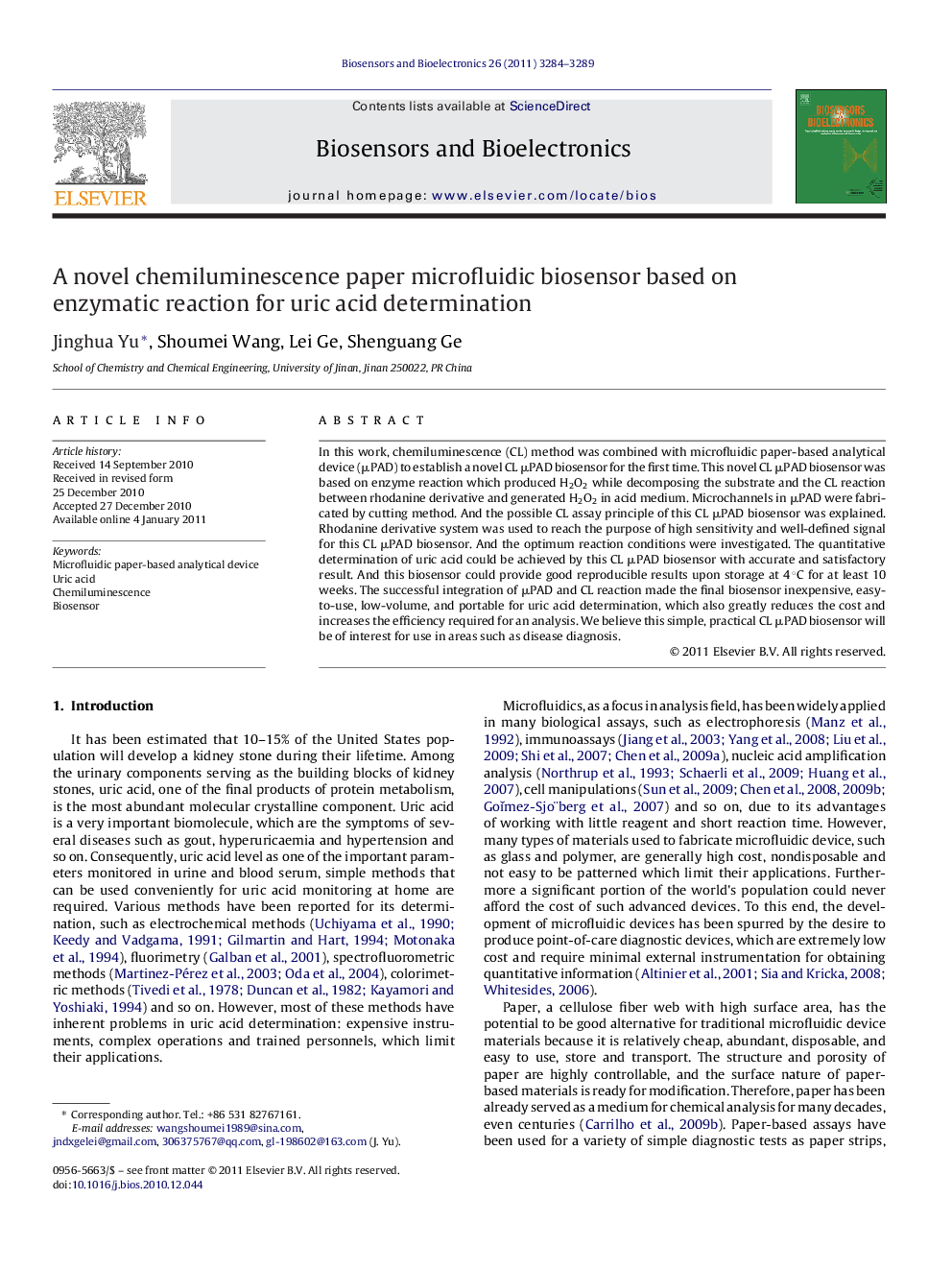| Article ID | Journal | Published Year | Pages | File Type |
|---|---|---|---|---|
| 868512 | Biosensors and Bioelectronics | 2011 | 6 Pages |
In this work, chemiluminescence (CL) method was combined with microfluidic paper-based analytical device (μPAD) to establish a novel CL μPAD biosensor for the first time. This novel CL μPAD biosensor was based on enzyme reaction which produced H2O2 while decomposing the substrate and the CL reaction between rhodanine derivative and generated H2O2 in acid medium. Microchannels in μPAD were fabricated by cutting method. And the possible CL assay principle of this CL μPAD biosensor was explained. Rhodanine derivative system was used to reach the purpose of high sensitivity and well-defined signal for this CL μPAD biosensor. And the optimum reaction conditions were investigated. The quantitative determination of uric acid could be achieved by this CL μPAD biosensor with accurate and satisfactory result. And this biosensor could provide good reproducible results upon storage at 4 °C for at least 10 weeks. The successful integration of μPAD and CL reaction made the final biosensor inexpensive, easy-to-use, low-volume, and portable for uric acid determination, which also greatly reduces the cost and increases the efficiency required for an analysis. We believe this simple, practical CL μPAD biosensor will be of interest for use in areas such as disease diagnosis.
